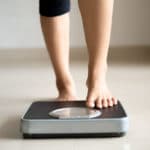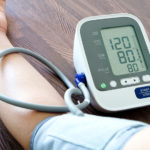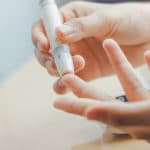By Deborah Jeanne Sergeant
To maintain good health, it’s all in the numbers that measure key indicators of health. These include blood pressure, cholesterol, minutes of activity per week, sleep, weight, blood glucose (if diabetic) and waist size.
“Different people have different numbers as far as their goals are concerned,” said Joshua Usen, doctor of osteopathic medicine at Primary Care of Western New York in Williamsville. “These are things a person needs to talk individually with their physician to see if they’re at their own goal.”
These numbers are important to lower risk of disease and mitigate the effects of any existing health conditions.
Most health care providers use the body mass index (BMI) to determine a patient’s ideal, healthy weight; however, the body composition can make a difference. Some people may carry a little extra weight, but is exercising and eating an overall healthful diet.
“BMI is a general marker of a healthy weight,” Usen said. “There’s the ‘healthy heavy,’” he said.
People like this don’t readily fit into the BMI numbers. A very muscular body builder may have a higher BMI than a lighter but less fit person. That’s why Usen said it’s a general guideline.
In general, a BMI between 20 to 25 is ideal. For most people, less than 20 is underweight. Between 25 and 30 is overweight, over 30 is obese and over 40 is morbidly obese. BMI calculators are available online a sites such as www.nhlbi.nih.gov/health/educational/lose_wt/BMI/bmicalc.htm.
Blood pressure is one of the vital signs because it’s associated with stroke and heart attack. Blood pressure should be less than 120/80.
“Blood pressure is the silent killer,” said physician Michael Dlugosz, with High Gate Medical Group in Williamsville. “It doesn’t have symptoms until it causes a heart attack or stroke. You want to prevent it when you’re not symptomatic.”
That’s why periodically checking it is so important.
 3. Cholesterol and triglycerides
3. Cholesterol and triglycerides
The LDL (“bad”) cholesterol should be under 160 and HDL (“good” cholesterol) over 40 and triglycerides under 150 for generally healthy people
Dlugosz starts checking cholesterol for men at age 35 and women at 45 because men have more cardiovascular risk. But he cautioned that anyone with risk factors should start at about 20 years old if they’re overweight, smoke or have hypertension.
“There’s been a dynamic shift following the numbers,” Dlugosz said. “Those are screening tests, not a perfect look into your body chemistry. It’s as good as we can get but still not great. If there’s a history of stroke or heart attack, we don’t focus on the numbers, but if you’re adequately treated with a cholesterol medication.”
Once a diabetic patient turns 40, Dlugosz automatically prescribes a cholesterol medication because their heavier, stickier cholesterol more readily adheres to the walls of blood vessels. Even if their cholesterol is under control, that risk factor of stickiness is enough to validate mediation.
Tahir said that high cholesterol can indicate inflammation in the body, which has been linked to multiple conditions, such as autoimmune disorders, cancers, heart disease and dementias.
 4. Minutes of exercise per week
4. Minutes of exercise per week
To maintain weight, a person needs 150 minutes of moderate exercise weekly or 75 minutes of vigorous exercise.
“When you’re talking about what’s moderate, I look at heart rates,” Dlugosz said.
To find the target heart rate, subtract your age from 220. Moderate intensity exercise should be between 64% and 76% of the target heart rate. Vigorous exercise should be between 77% and 93% of the target heart rate, according to the Centers for Disease Control and Prevention.
“That’s when you’re maximally active,” Dlugosz said. “Everyone’s will be a little different based on age and physical fitness.”
Most experts agree that between seven to nine hours of nightly sleep are recommended, and more for children.
“It helps emotionally and physically,” Dlugosz said. “The more sleep deprived you are, the more in a state of stress you are.”
Diabetics should have their A1C blood test reading under 7 “to help prevent eye and kidney problems and neuropathy,” Dlugosz said.
Pre-diabetes is identified between 5.5 and 6.6. In general, the A1C is administered annually for those who have prediabetes; biennially for those with Type 2 diabetes who don’t use insulin and have their blood sugar level within their target range; and quarterly for Type 1 or Type 2 diabetics.
“People can check it at home and not just diabetics,” Tahir said. “People who are not diabetic should check it once in a while.”
More than just for vanity, waist circumference can indicate weight gain that has been linked with cardiovascular disease.
“If I see a person that has central obesity in the belly, that’s when I focus more on circumference and changes in inches,” Dlugosz said.






